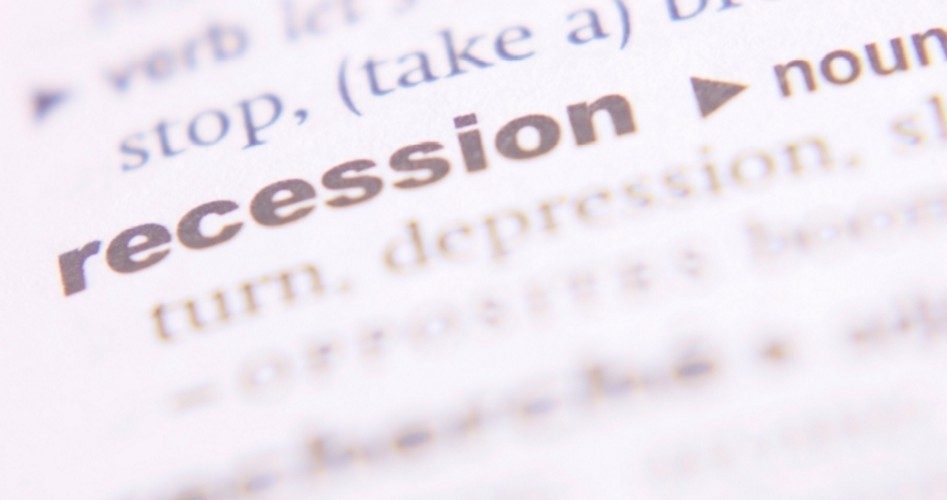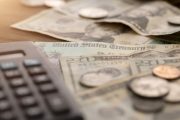
The number of people who filed for unemployment the week ending June 6 declined more than 20 percent from the previous week, but the figure still shows, as the Labor Department reported on Thursday, the devastating blow the Chinese Virus pandemic and national lockdown delivered to the economy.
More than 1.5 million filed for unemployment, 355,000 less than the previous week’s 1.877 million.
Nearly 45 million people have filed for claims since March 1.
For the week ending May 30, unemployment was 14.4 percent, a slight dip from the week before.
The unsurprising result of the lockdown that has killed tens of millions of jobs? The economy is now in a recession, the National Bureau of Economic Research announced last week.
The Numbers
Such was the robust economy through February 2020 that weekly unemployment claims rarely exceeded 220,000, the department’s data show.
Even for the first two weeks of March, they didn’t surpass 300,000. But then came the week of March 21, when the number of claims rocketed from 282,000 to 3.307 million, a 1,072-percent increase.
Claims more than doubled the week ending March 28 to 6,867, a high from which they have been declining ever since (numbers below in thousands):
March 7 — 211
March 14 — 282
March 21 — 3,307
March 28 — 6,867
April 4 — 6,615
April 11 — 5,237
April 18 — 4,442
April 25 — 3,846
May 2 — 3,176
May 9 — 2,687
May 16 — 2,446
May 23 — 2,126
May 30 — 1,897
June 6 — 1,542
Total — 44.68 million
Last week’s figure of 1.542 million claims is 77.5-percent less than the high posted in March.
For the week ending May 23, the department reported, 9.71 million in 42 states applied for Pandemic Unemployment Assistance. Another 518,942 across 32 states applied for Pandemic Emergency Unemployment Compensation.
The states with the largest increase in unemployment claims were these:
Florida — 32,296
California — 25,372
Oklahoma — 16,662
Mississippi — 158
The states with the largest decreases were these:
New York — 107,161
Michigan — 25,284
Texas — 21,040
Pennsylvania — 18,050
Washington — 17,507
State unemployment rates remain high, particularly in Michigan and Pennsylvania, two swing states that might determine the outcome of the next presidential election. Michigan’s rate for the week ending May 23 dipped slightly to 21.7 percent from 22.9, the department reported. Pennsylvania, not on the list of the top 10 states with the high unemployment for the week ending May 16, posted a rate of 17.5 percent.
State — May 23 / May 16
Maine — 26.9 / 22.9
Nevada — 24.3 / 24.9
Michigan — 21.7 / 22.9
Hawaii — 20.1 / 20.6
Puerto Rico — 19 / 22.7
New York — 18.7/ 19.2
Pennsylvania 17.5 / **
Georgia — 17.2 / **
Massachusetts — 16.8 / **
Rhode Island — 16.6 / 18.6
** Not on list
It’s a Recession
Last week, economists said the economy is in a recession — the time between when the economy peaks, slows, and reaches rock bottom and when it begins growing again.
On June 8, the National Bureau of Economic Research reported that the 11-year economic expansion, which began in June 2009 when the last recession ended, ceased in February when the pandemic and ensuing panic struck.
“A peak in monthly economic activity occurred in the U.S. economy in February 2020,” NEBR reported. “The expansion lasted 128 months, the longest in the history of U.S. business cycles dating back to 1854. The previous record was held by the business expansion that lasted for 120 months from March 1991 to March 2001.”
NEBR notes that “Expansion is the normal state of the economy; most recessions are brief. However, the time that it takes for the economy to return to its previous peak level of activity or its previous trend path may be quite extended.”
Bad as that news is, particularly for President Trump, the economy might have reached its low point and begun recovering, the New York Times reported:
Robert Gordon, a Northwestern University economist and a member of the dating committee, said that he would bet a recovery started in April or May, meaning that the recession would most likely last for only a couple of months. Even so, he said, labeling it a downturn was not a hard choice “because of the extraordinary depth.”
“There’s no way you can observe that happening and not call it a recession,” he said, while acknowledging that it was a very unusual one. “Nothing like it has ever happened.”
The unemployment rate in March was 4.4 percent, but jumped to 14.7 percent in April, the highest since 1940. In May, the rate dropped to 13.3 percent.
Unemployment will continue declining as businesses reopen and Americans get back to work.
R. Cort Kirkwood is a long-time contributor to The New American and a former newspaper editor.



